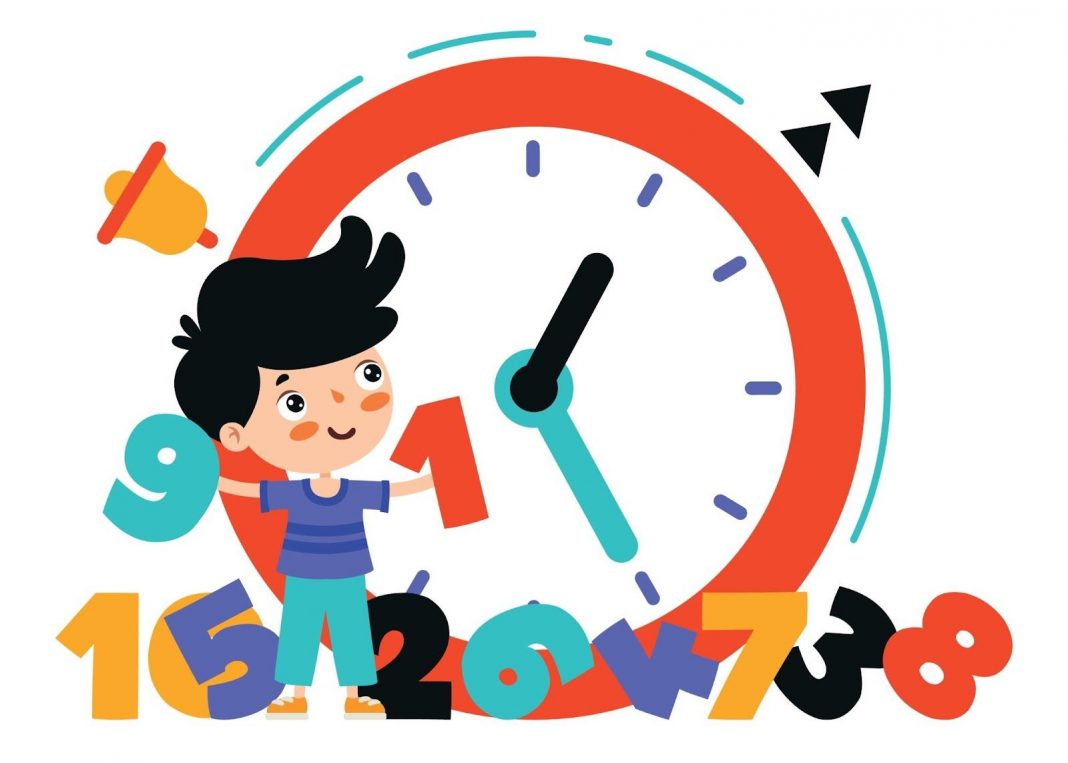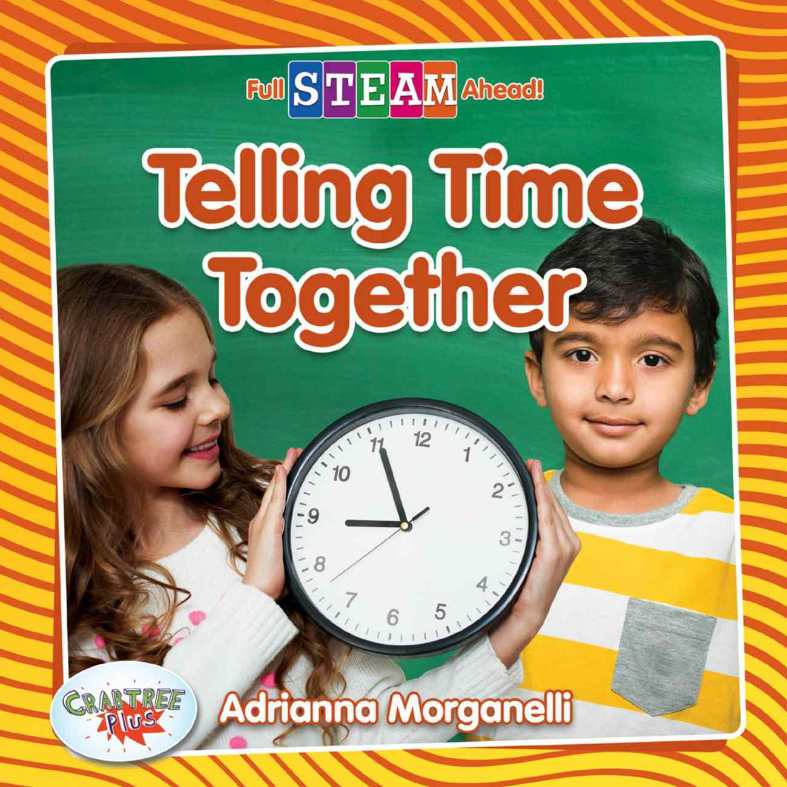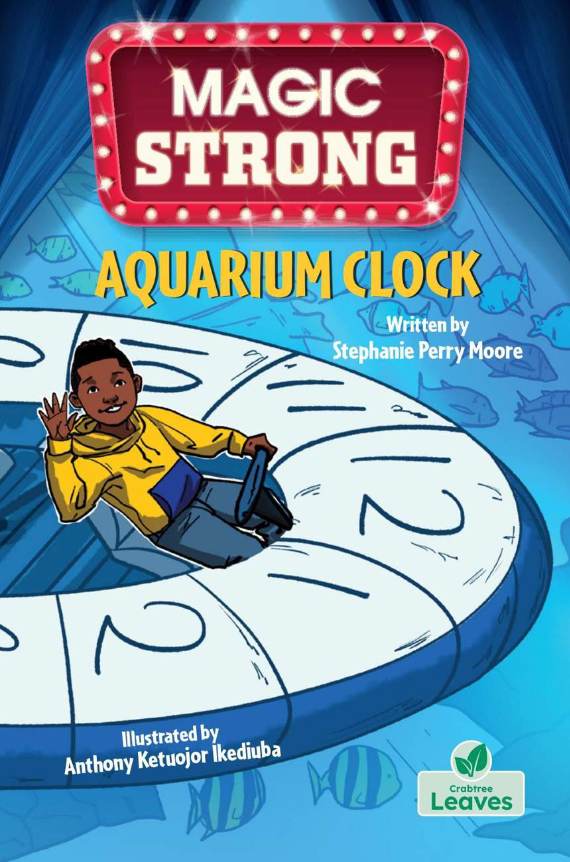- 2 Activities to Introduce the Clock Face
- 4 Activities to Teach How to Tell Time to the Hour (o’clock Time)
- 3 Activities to Introduce the Half-Past or the Half-Hour Timings
- 2 Activities to Introduce Time in Quarter Hours (Quarter Past and Quarter To)
- 2 Activities to Teach How to Tell Time to the Nearest 5 Minutes
- 3 Activities to Teach How to Tell Time to the Exact Minute
- 3 Activities to Introduce Digital Clocks
- 3 Activities to Teach A.M. and P.M.
- 2 Activities to Teach Elapsed Time
- 7 Mixed Practice Activities
As a parent of three kids, I’ve had my fair share of teaching moments – some easy, some not so much. One task that stood out was “how to teach telling time.” It sounds simple, but it’s a big step for a child. In this blog, I will talk about “how to teach telling time” in a way that’s easy and fun for kids.
Math & ELA | PreK To Grade 5
Kids see fun.
You see real learning outcomes.
Watch your kids fall in love with math & reading through our scientifically designed curriculum.
Parents, try for free Teachers, use for free
I’ve tried different methods with my children, and I want to share what worked and what didn’t. Whether you’re a parent or a teacher, I hope these tips will make the time-teaching journey easier for you and your kids. Let’s explore fun ways to teach telling time!
Learning to tell time can be tough for kids, but SplashLearn makes it easier and more fun. Sign up now and help your child master telling time with engaging and interactive methods!
31 Best Telling Time Activities For Kids
2 Activities to Introduce the Clock Face
Start by familiarizing children with the parts of the analog clock: the hour hand, the minute hand, and the numbers 1-12.
1. Colorful Clock Craft
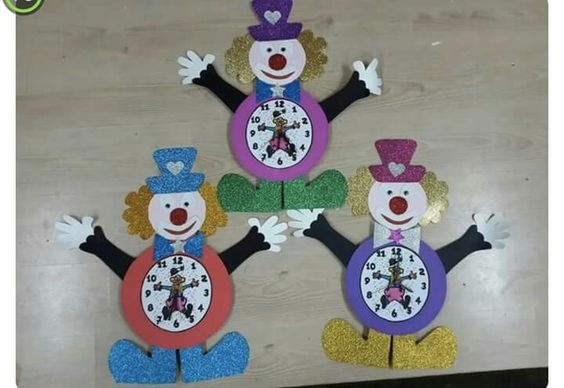
This is one of the most creative clock activities for kindergarten. It helps kids learn about the clock’s face and its numbers through a fun art project. By making their clock, kids get hands-on experience in understanding how a clock works, which is great for their memory and recognition skills.
You’ll need a paper plate, colored paper, a marker, and a brad for the clock hands. Let the kids decorate the plate to make the clock face, then write the numbers. Attach the paper hands with the brad, and they have their clock!
2. Clock Labeling Exercise
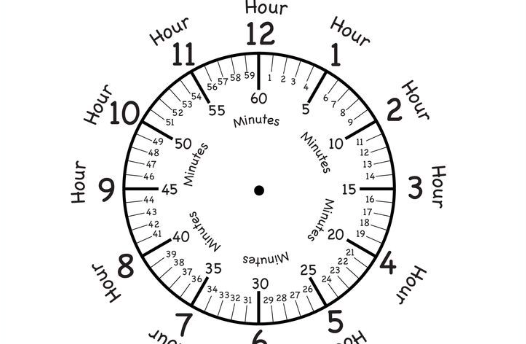
This is a basic activity to help kids learn the clock face and its components. It’s a great starting point for beginners in time-telling. Give children a large image of a blank clock face. They should label the hours and minutes and identify where the hour and minute hands point for given times.
4 Activities to Teach How to Tell Time to the Hour (o’clock Time)
When teaching time to kids, start with a simple whole-hour time format (e.g., 1:00, 2:00). Use clear language like “The hour hand points to the number, and the minute hand points to 12.”
Here are some fun ways to do this:
1. Time in Hours Games
In these games, kids will get hands-on practice in setting and reading time in hours and selecting the correct analog clock for a given time.
2. Setting Time on a Hula Hoop Clock Game
Create a life-size analog clock. Lay a hula hoop on the floor as the clock face. Use number cards for hours and a long and short stick for hands. Call out times (e.g., “3 o’clock”) and have students set the hands.
3. Observe the Chiming Clock:
Use a house clock that chimes every hour. Ask your child to observe the clock each time it chimes and describe where the hands are pointing. After a few hours, discuss how the big hand is always on 12 and the small hand points to the hour at “o’clock” times.
4. Use Worksheets for Teaching Telling Time in Hours:
Use these printable worksheets to help kids practice everything from identifying the positions of hands to drawing an hour clock to represent the o’clock time.
Begin here
Let’s practice reading time in the o’clock format!
3 Activities to Introduce the Half-Past or the Half-Hour Timings
Explain that when the minute hand points at the 6, it’s half past the hour. For example, when the hour hand is between 3 and 4, and the minute hand is on 6, it’s half past 3. Here are fun ways to do this:
1. Half-Hour Hand Movement
Move the hands on a clock to show “o’clock” and then to “half-past.” Ask the child to describe how the small hand moves halfway to the next number when the big hand reaches 6.
2. Time Telling Practice
Set the clock to various half-past times and ask your child to name them (e.g., “half-past 4”). Encourage them to explain how they figured it out by observing both hands. Here are fun worksheets you can use to create task cards—drawing clock hands, identifying the right clock, or matching clocks with half-past time:
3. Use Real-Life Connections
Relate “half past” to everyday activities. For example:
- “We eat lunch at half past twelve,”
- “We go to bed at half past eight,”
- “We leave for school at half past seven.”
2 Activities to Introduce Time in Quarter Hours (Quarter Past and Quarter To)
Introduce the concept of quarters of an hour. Explain that when the minute hand points at the 3, it’s quarter past the hour, and when it points at the 9, it’s quarter to the next hour. Here are fun ways to do this:
1. Sing Quarter-Past and Quarter-To Rhymes
Rhymes help kids learn and remember concepts better. Sing fun rhymes with demonstrations to teach the concepts of quarter-past and quarter-to. Here’s a simple one you can sing along with kids:
Big hand on three, quarter past the hour,
Fifteen minutes gone, time has power!
Big hand on nine, quarter to, it’s near,
Next hour is coming, soon it’ll appear!
2. Clock-Hands Movement Practice
Move the hands on a clock to show quarter past and quarter to times. Ask your child to describe where the hands are and explain whether it’s 15 minutes after or before the hour. Here are targeted worksheets that challenge students to draw clock hands to represent given time in quarter hours:
2 Activities to Teach How to Tell Time to the Nearest 5 Minutes
Help children understand that each big division between two consecutive numbers on the clock represents 5 minutes. Show how the minute hand moves in five-minute intervals, counting by fives around the clock. Here are fun ways to do this:
1. Time Matching Game
Set a clock to times like 3:05 or 4:20 and ask your child to read the time aloud. You can even turn it into a fun challenge to match the time with the correct analog clock. Try these fun games to target both activities in a playful way:
2. 5-Minute Count Practice
Ask your child to count around the clock in fives (5, 10, 15, etc.), pointing to each number as they go. Explain that each time the minute hand moves from one number to the next number, 5 minutes have passed.
3 Activities to Teach How to Tell Time to the Exact Minute
Introduce the five small markings between two numbers. Explain that each small marking represents 1 minute. Discuss timings like 03:07, 05:32. Here are fun ways to do this:
1. Counting Minute Marks
Show your child how the small markings between each number represent 1 minute. Pick a starting number like 12 and count minute marks up to a random stopping point (e.g., “Start at 12 and stop at the 7th mark—what time is it?”). Repeat with different starting points to help them track the exact minute from any position on the clock.
2. “Set the Clock” Practice
Call out exact times like 2:13 or 6:27 and ask your child to set an analog clock to match. Emphasize finding the small marks between the numbers to place the big hand precisely.
3. True or False Checks
Show your child an analog clock and give them a written time (e.g., “3:17”). Ask them to decide if the time you’ve given matches the time shown on the clock. They’ll need to carefully check the positions of both hands, boosting their confidence and accuracy with practice. Here are targeted worksheets to carry out this activity with ease:
3 Activities to Introduce Digital Clocks
Learning time for kids becomes easier when they practice reading both analog and digital clocks. Explain how to read the time on a digital clock and how it relates to the analog clock.
Here are fun ways to do this:
1. Break Down the Digital Format
Explain the digital clock format as “HH:MM,” where “HH” represents the hour and “MM” represents the minutes. Show examples like 03:15 (3 hours and 15 minutes), 06:00 (6 hours and 0 minutes), and 12:45 (12 hours and 45 minutes).
2. Use Digital Clock Worksheets
In these printable worksheets, kids can practice reading time in digital format, matching analog clocks with digital clocks, writing digital time in words, sorting digital clocks by time (o’clock, half past, quarter past, and quarter to), and drawing analog clock hands to represent the given digital time.
3. Set Time on the Digital Clock
Call out a time (e.g., 4:15) and ask your child to quickly set it on a toy digital clock or write it in digital format. This helps them practice converting spoken time into digital form.
3 Activities to Teach A.M. and P.M.
Explain the difference between AM (morning to noon) and PM (afternoon to night). Use examples from their daily routine (e.g., “You wake up at 7:00 AM” or “Dinner is at 6:00 PM”) to reinforce this concept. Here are fun ways to do this:
1. A.M. or P.M.?
Ask your child to think about their daily routine. For example, “When do you eat breakfast—A.M. or P.M.?” or “Is bedtime in A.M. or P.M.?” Use examples to connect A.M. with morning and P.M. with afternoon/evening. Here are targeted worksheets to plan this activity with your child:
2. Daily Routine Time Matching
It is a practical approach to teaching telling time. It connects learning to real life by linking daily activities like eating breakfast or going to bed with their corresponding times. This helps children understand the daily rhythm and the importance of time management. Make a chart of your child’s daily routine with pictures representing different activities.
Then, ask them to match these activities with the usual times. This can be done with drawings or printed pictures and a clock.
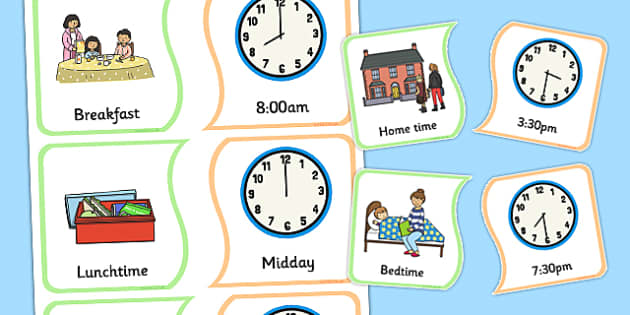
3. Tricky A.M.-P.M. Times
12:00 A.M./P.M. is a common area of confusion. Help kids connect them both with real-life situations. For instance, 12 A.M. is midnight (time for stargazing or the start of a new day!) and 12 P.M. is noon (lunchtime!).
2 Activities to Teach Elapsed Time
Teach how to calculate the time that has passed. Start with simple problems within the same hour.
Here are fun ways to do this:
1. Clock Countdown
Set a clock to a time (e.g., 3:15) and ask, “What time will it be 20 minutes later?” Have your child move the minute hand forward to find the answer, staying within the same hour. Here’s a worksheet that challenges kids to draw clock hands to represent time one hour later:
2. Time Jumps
Call out a starting time (e.g., 2:25) and give increments to add (e.g., 15 minutes). Have your child count forward on the clock in steps of 5 until they reach the answer.
7 Mixed Practice Activities
Mixed practice keeps kids on their toes! Switch between all the time formats to make your child more flexible and confident in telling time in real life. Here are fun ways to do this:
1. Time-Telling Bingo
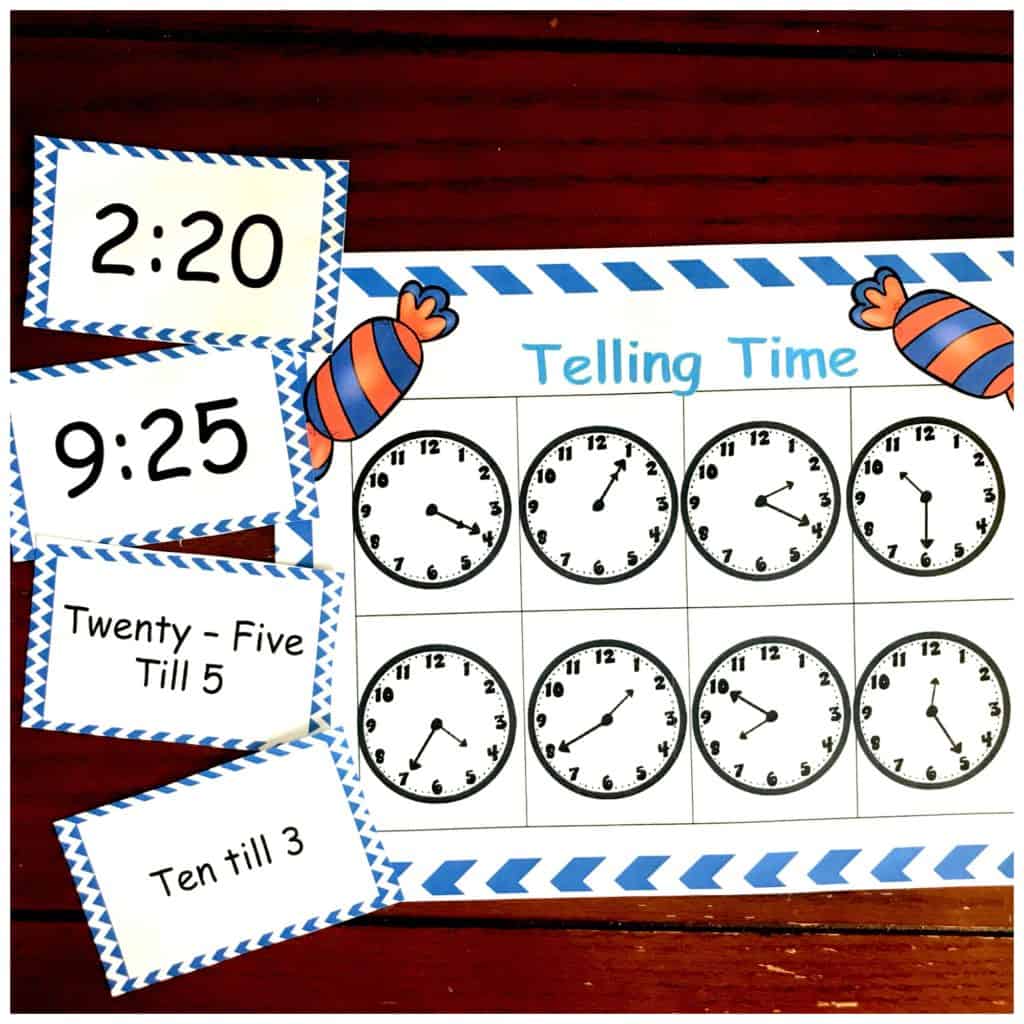
Time-Telling Bingo turns learning into a game, making it one of the most engaging time activities. It’s great for teaching kids to recognize different times on a clock. This activity also encourages group interaction and helps in developing social skills. Create bingo cards with different times shown on clock faces. Call out times, and kids will mark them on their cards. The first to get a line wins! This can be played in a classroom or at home with family.
2. Story Time with Time
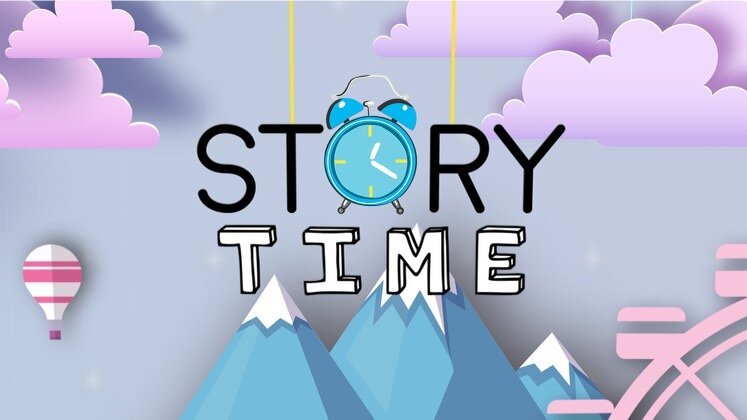
If you are looking for creative activities on how to teach time to kids, this can be a great option. By incorporating time-telling into storytelling, children learn to associate different times of the day with different activities. It helps them understand the concept of time in a narrative context, making it more relatable and memorable.
Create a story where the characters do different activities at specific times. As you read the story, pause and ask your child what time it is in the story. You can use a toy clock or a drawing to help them find the answer. This virtual analog clock is also a great tool!
3. Clock Puzzle Challenges
This activity combines the excitement of a puzzle with the educational aspect of time-telling. It’s perfect for enhancing problem-solving skills and understanding clock faces. Create or buy puzzles with different clock faces showing various times. Challenge your child to complete the puzzle and then read the time shown on each completed clock face. For an added challenge, you can create clues or questions for each time, turning it into a mini treasure hunt of knowledge.
4. Flashcards Fun
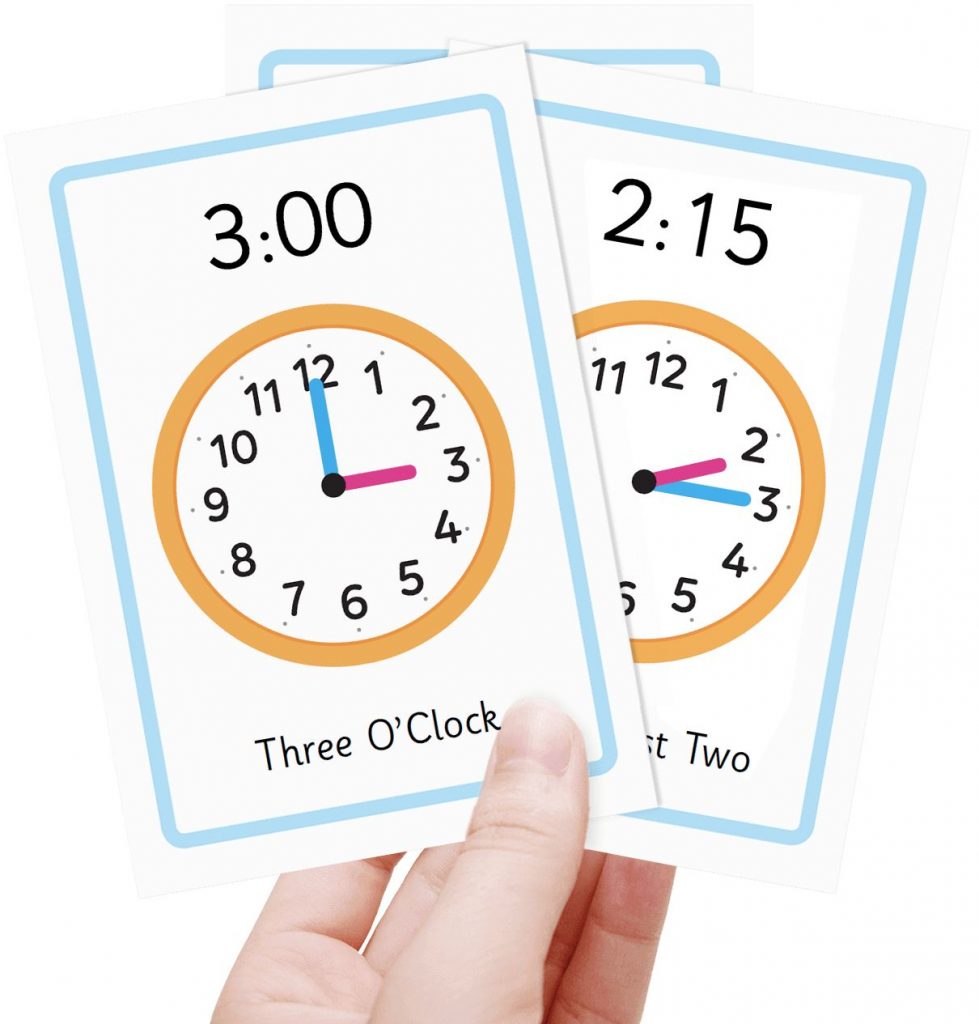
Using flashcards is a classic method of telling time. It’s a fun way for kids to practice reading at different times. Flashcards can be used for quick daily practice and effectively reinforce what kids have learned. Create flashcards with different times shown on clock faces. Show the cards to your child and ask them to tell the time. For variety, you can also ask them to draw their hands on a blank clock to match a written time.
5. Time Quiz Show
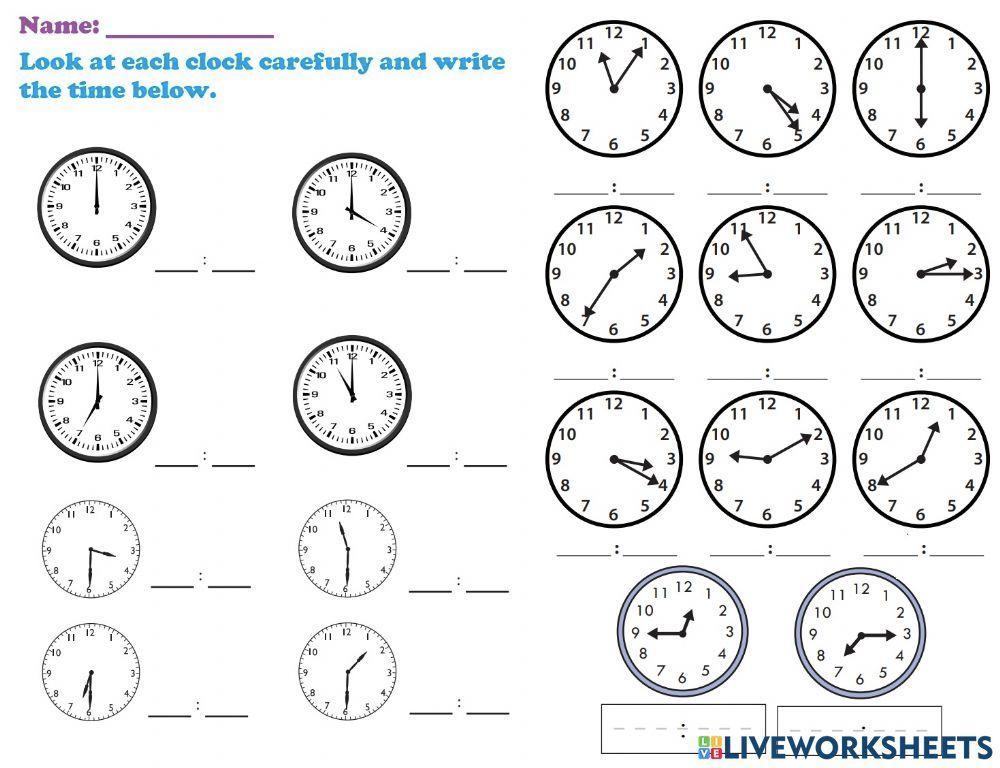
A Time Quiz Show is a fun family activity that turns learning into a game. It’s a great way to review time-telling skills and involve the whole family in learning. This game can be tailored to suit the age and learning stage of the child. Create a quiz with different time-telling questions. These can range from reading clock faces to calculating time intervals. Take turns being the quizmaster and the contestant. You can use buzzers for a real game show feel and small prizes for correct answers.
6. Interactive Online Telling Time Games
These online games cover everything from introduction to clock hands to telling/setting time in different time formats through hands-on activities. This is one of the most fun telling time activities.
7. Fun Books on Telling Time
Help kids explore the concept of time using these colorful books with fun illustrations and easy-to-understand texts.
Enjoy learning about time concepts through engaging books!
Related Reading: Best Hands-On Measurement Activities for Kids
Why Is Teaching Kids to Tell Time Important?
1. Development of Time Management Skills: When we start teaching telling time to our kids, we do more than just show them the clock. We’re helping them understand how to plan their day. They learn how long they can play before dinner or how much TV time they have. This is their first step in managing time, a skill they’ll use all their life.
2. Enhancing Mathematical Understanding: Telling time is also a great way to boost their math skills. It’s not just about reading the clock; it’s about understanding numbers, counting, and even basic arithmetic. When kids learn how to tell time, they also practice adding and subtracting minutes and hours, which is a fun way to get better at math.
3. Building Responsibility and Independence: Knowing how to read a clock helps kids feel more independent. They don’t always have to ask an adult; they can check the time themselves. This builds their confidence and sense of responsibility. It’s a big step for them to manage their activities and schedules.
4. Real-World Application: Teaching telling time has a lot of practical uses in everyday life. Whether it’s catching the bus on time, knowing when a TV show starts, or being on time for a friend’s birthday party, understanding time helps kids navigate their day-to-day activities more smoothly.
5. Cognitive Development: Learning to tell time is great for a child’s overall brain development. It’s not just about the hands on the clock; it’s about understanding the concept of time, which is abstract. Grasping this concept helps improve their problem-solving and reasoning skills, which are important in all areas of learning.
Conclusion
As we’ve explored various telling time activities, remember that each child’s journey is unique. Patience and creativity are key. Using these fun and engaging activities sets the foundation for a lifetime of time management and independence for your little ones.
Related Reading: How to Teach Multiplication to Kids: 15 Fun Ways
Frequently Asked Questions (FAQs)
At what age should children start learning to tell time?
Children can start learning the basics of telling time around the age of 5 or 6, when they begin to understand numbers and can simply grasp the concept of time.
How can technology help in teaching time-telling?
Through interactive apps and online games, technology can make learning to tell time more engaging and fun, offering visual and interactive elements that traditional methods might lack.
What are common challenges kids face when learning to tell time?
Common challenges include understanding the difference between the hour and minute hands, grasping the concept of time intervals, and applying their knowledge to real-world scenarios.
How can parents integrate time-telling lessons into everyday life?
Parents can integrate time-telling into daily routines, like asking what time it is during meals, setting activity timers, or using clocks during playtime to create a practical learning environment.
Are there specific tools or resources you recommend for teaching time-telling?
Tools like teaching clocks, flashcards, educational apps, and time-telling games can be very effective. Also, books and stories that incorporate time concepts are great for reinforcing lessons.

















